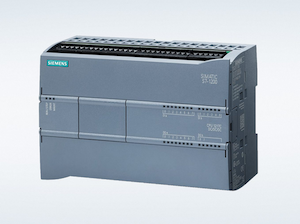Siemens is working on addressing a vulnerability that can be exploited by a skilled attacker to execute arbitrary code on its SIMATIC S7-1200 programmable logic controller (PLC) by abusing a hardware-based access mode.
Ali Abbasi, Tobias Scharnowski and Thorsten Holz of the Ruhr-University Bochum in Germany have conducted an analysis of Siemens S7-1200 PLCs, which, according to Siemens, are designed for discrete and continuous control in industrial environments, including in the manufacturing, chemical, and food and beverage sectors.
The researchers analyzed the device’s firmware integrity verification mechanism, which is triggered on boot and uses bootloader code that is stored on separate SPI flash memory. An investigation of this bootloader, which the experts believe is present on S7-1200 PLCs made since 2013, revealed the existence of an undocumented access mode.
Described by the researchers as a hardware-based special access feature, it’s normally designed to provide additional diagnostic functionality during manufacturing. However, they discovered that an attacker who has physical access to a PLC could abuse it — through a cold boot attack — by sending a special command via the universal asynchronous receiver-transmitter (UART) interface during the first half second of the PLCs booting process, which allows them to dump the firmware from the memory.
An attacker can also leverage a combination of diagnostic functionalities to achieve arbitrary code execution in the bootloader stage, before the PLC firmware is loaded. The researchers have created a proof-of-concept (PoC) exploit showing how this method could be used to write data to the flash chip through the PLC’s firmware update functionality.
On the other hand, the researchers pointed out that this special access feature could also be leveraged by the owner of a PLC to conduct forensic analysis.
“Assume that your PLC crashed,” Abbasi explained. “Generally, companies can not do forensics on the PLC beside the logs generated by the PLC itself. Now, using this special access, companies [performing forensic analysis] can have a snapshot of the memory of the PLC at the time of the crash and further investigate if there is an infection on the PLC.”
“Another thing is to verify that the control logic is not changed. For example, the first time you upload control logic, you take a snapshot of the memory, and later on if you are suspicious about a PLC, just reboot the PLC, take a snapshot of the corresponding memory and see if the binary is modified or not by comparing it to the original snapshot,” the researcher told SecurityWeek.
He added, “Also, if an attacker exploits the PLC and places shellcode in the memory (and not do a ROP Chain), technically it is now feasible to see the shellcode via a reboot and dumping the memory.”
Learn More About Flaws in ICS Products at SecurityWeek’s 2020 ICS Cyber Security Conference
Abbasi says they have reported their findings to Siemens in March and the company released an advisory this week to inform customers that it’s working on a solution. In the meantime, customers have been advised to ensure protection against physical access and apply defense-in-depth recommendations. The industrial giant told the researchers that it would remove the problematic access mode from PLCs.
The researchers plan on presenting their findings next month at the Black Hat Europe conference in London.
Abbasi told SecurityWeek that the vulnerability was actually discovered one year before it was reported to Siemens. The weakness was found as part of a larger project and the researchers decided not to immediately report it to Siemens due to concerns that the vendor would patch it and make their project unfeasible.
Siemens has assigned the vulnerability the identifier CVE-2019-13945 and a CVSS score of 6.8, which makes it a medium-severity issue.
However, Abbasi explained that exploitation of the vulnerability requires deep knowledge of the PLC operating system. “Once you know the concept it is not that difficult to exploit,” he said.
However, he pointed out that while creating an exploit might not be very difficult, it depends on what the attacker wants to achieve. For example, attempting to write to the flash memory requires deep knowledge of the PLC, its operating system and bootloader.
*updated to clarify that the cold boot attack only allows the attacker to dump the firmware, and that diagnostic functionalities allow arbitrary code execution
Related: Hackers Can Use Rogue Engineering Stations to Target Siemens PLCs














